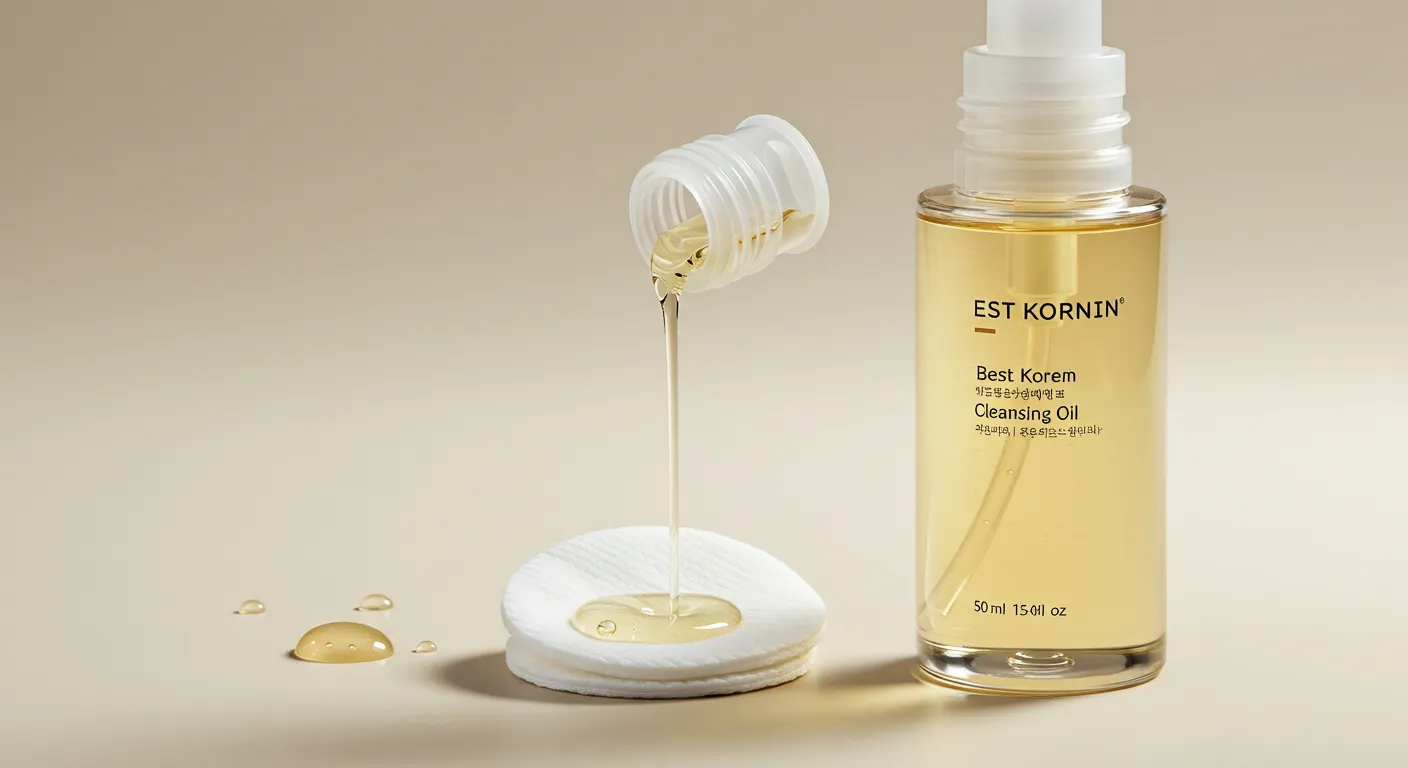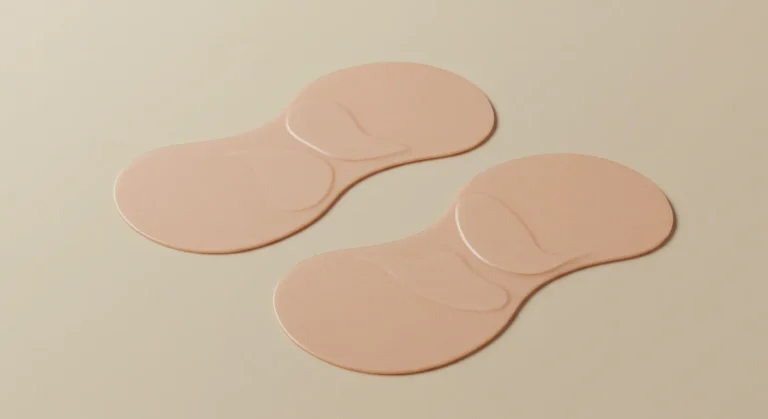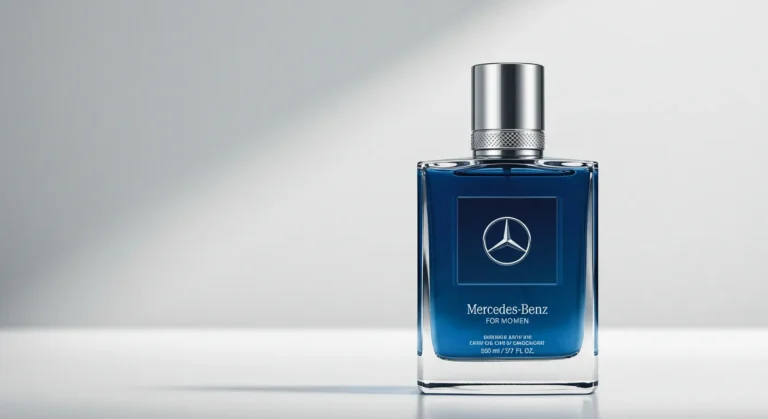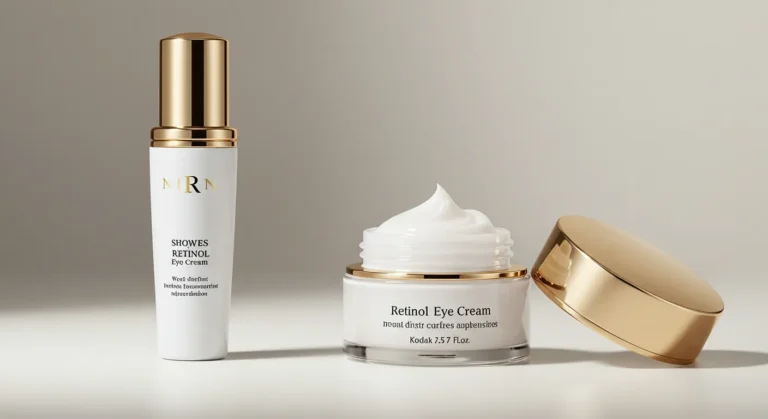Best Korean Cleansing Oils 2025 Top Picks, Benefits
Introduction
In recent years, Korean skincare has transformed from a niche beauty trend into a global phenomenon, and at the heart of this movement is the Korean cleansing oil. Known for its ability to gently yet effectively remove makeup, sunscreen, and impurities without stripping the skin’s natural moisture, Korean cleansing oils have become a must-have in daily skincare routines worldwide.
The secret behind their popularity lies in the Korean beauty philosophy — a holistic, skin-first approach that focuses on hydration, balance, and long-term results rather than quick fixes. In Korea, cleansing isn’t just about washing away the day’s dirt; it’s about preparing the skin to absorb nutrients from the rest of your routine. Cleansing oils are designed to dissolve oil-based impurities, leaving skin fresh, soft, and ready for treatment products.
But there’s another reason for their surge in demand: ingredient innovation. Korean cleansing oils often feature natural botanicals, fermented extracts, and lightweight plant oils that not only cleanse but also nourish the skin. Whether you have oily, dry, sensitive, or combination skin, there’s a Korean cleansing oil formulated specifically for your needs.
As we move into 2025, cleansing oils are becoming more advanced — think eco-friendly packaging, vegan formulations, and multi-functional benefits like anti-aging or brightening. In this guide, we’ll explore the best Korean cleansing oils of 2025, break down how they work, and help you choose the perfect one for your skin type.
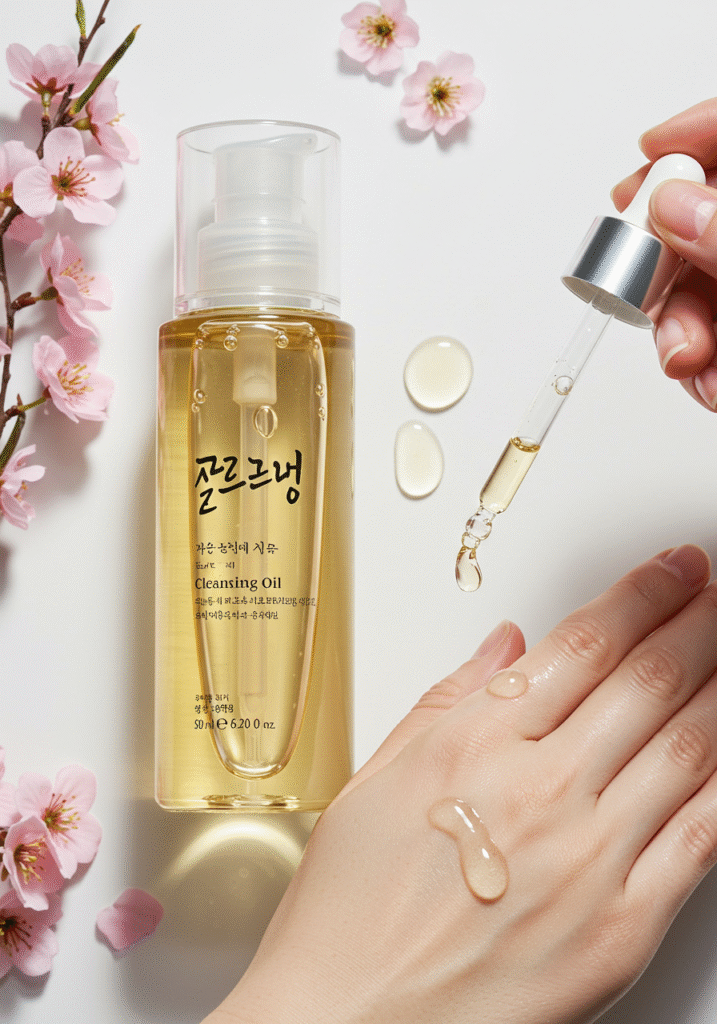
What Is a Korean Cleansing Oil ?
A Korean cleansing oil is a lightweight, oil-based cleanser designed to remove oil-soluble impurities such as makeup, sunscreen, excess sebum, and pollution particles. Unlike foaming cleansers that can leave skin tight or dehydrated, cleansing oils work by using the principle of “like dissolves like” — meaning oil attracts oil.
When you massage a cleansing oil into your dry skin, it binds to makeup pigments, sebum, and SPF residues, breaking them down so they can be rinsed away. Add a little water, and the oil emulsifies into a milky texture, making it easy to rinse without leaving a greasy residue.
Korean cleansing oils stand out for a few reasons:
- Gentle Formulations: Many are free from harsh sulfates and synthetic fragrances, making them ideal for sensitive skin.
- Nutrient-Rich Ingredients: You’ll often find green tea, rice bran oil, camellia oil, or fermented extracts that feed your skin while cleansing.
- Part of the Double Cleansing Method: In Korean skincare, cleansing oils are usually the first step in a two-step cleansing routine, followed by a water-based cleanser to ensure every trace of dirt is gone.
The result? Clean, balanced, hydrated skin that’s ready to absorb serums, moisturizers, and treatments more effectively.
Top 10 Best Korean Cleansing Oils for 2025
Below are our expert picks for the top Korean cleansing oils in 2025, based on performance, ingredients, skin compatibility, and customer reviews.
Banila Co Clean It Zero Cleansing Balm
- Best For: All skin types
- Why We Love It: Technically a balm, but melts into an oil upon contact with skin. Removes even waterproof makeup while feeling weightless. Packed with vitamin C-rich acerola extract for added brightness.
The Face Shop Rice Water Bright Light Cleansing Oil
- Best For: Dull, uneven skin tone
- Why We Love It: Rice water is a centuries-old Korean beauty secret for bright, glowing skin. Lightweight, non-greasy, and budget-friendly.
Innisfree Apple Seed Cleansing Oil
- Best For: Combination to oily skin
- Why We Love It: Apple seed oil and apple extract refresh skin while breaking down excess sebum without clogging pores.
Klairs Gentle Black Deep Cleansing Oil
- Best For: Dry or sensitive skin
- Why We Love It: Contains black bean oil, black sesame oil, and black currant seed oil to deeply nourish while cleansing. Calms redness and irritation.
Sulwhasoo Gentle Cleansing Oil
- Best For: Mature or luxury skincare lovers
- Why We Love It: A premium cleansing oil infused with Korean herbal medicine extracts like ginseng and coix seed to boost skin vitality.
Heimish All Clean Balm
- Best For: All skin types, especially travelers
- Why We Love It: Balm-to-oil formula in portable packaging. Features shea butter, coconut extract, and white flower complex.
Etude House Real Art Cleansing Oil
- Best For: Dry skin
- Why We Love It: Rich, hydrating blend of coconut, grape seed, and apricot kernel oils that leaves skin silky after cleansing.
Purito From Green Cleansing Oil
- Best For: Sensitive, eco-conscious users
- Why We Love It: 100% natural oils, vegan, and free of synthetic fragrance. Light but effective at removing impurities.
Laneige Perfect Pore Cleansing Oil
- Best For: Acne-prone or congested skin
- Why We Love It: Features mugwort extract to purify pores while removing makeup. Gentle enough for daily use.
Nature Republic Forest Garden
- Best For: Sensitive skin prone to redness
- Why We Love It: Chamomile soothes irritation while sunflower seed oil melts away impurities.

How to Choose the Right Korean Cleansing Oil
Choosing the right cleansing oil isn’t just about picking the most popular brand — it’s about finding a formula that matches your skin’s needs. The wrong product can leave your skin feeling greasy, dry, or even irritated, while the right one will feel like a luxurious first step in your routine.
Here’s a breakdown of how to pick the perfect match:
For Oily or Acne-Prone Skin
Contrary to popular belief, oily skin benefits from cleansing oils — they help regulate sebum production. Look for:
- Lightweight plant oils (grape seed, jojoba, sunflower) that won’t clog pores.
- Non-comedogenic formulas that are free from heavy mineral oils.
- Added ingredients like green tea, tea tree oil, or mugwort to control excess oil and reduce inflammation.
For Dry Skin
Dry skin craves moisture, so you’ll want a richer formula. Choose:
- Nourishing oils like argan, macadamia, or sweet almond oil.
- Creamy textures that emulsify without stripping natural lipids.
- Added hydrating agents like ceramides or squalane.
For Sensitive Skin
If you’re prone to redness or irritation:
- Look for fragrance-free, hypoallergenic formulas.
- Chamomile, calendula, and oat extracts can calm skin during cleansing.
- Avoid strong essential oils and alcohol.
For Combination Skin
Combination skin can handle balanced formulas:
- Mid-weight oils that cleanse without over-hydrating or drying.
- Ingredients like rice bran or apricot kernel oil for a balanced cleanse.
Pro Tip: Always patch test before committing to a new cleansing oil, especially if you have reactive skin.
Benefits of Using a Korean Cleansing Oil
Adding a Korean cleansing oil to your skincare routine comes with multiple benefits that go far beyond simply removing makeup. Here’s why they’ve become a non-negotiable step for many:
Effective Makeup Removal
Korean cleansing oils excel at dissolving even stubborn waterproof mascara, long-wear foundation, and heavy SPF without tugging or scrubbing.
Deep but Gentle Cleansing
Unlike some foaming cleansers that can strip your skin, cleansing oils lift away dirt and sebum while leaving the skin barrier intact.
Skin Nourishment
Many formulas are enriched with vitamins, antioxidants, and fatty acids that protect against environmental stressors and nourish skin cells.
Prepares Skin for Skincare Products
Clean skin absorbs serums, essences, and moisturizers more efficiently, so you get more out of your routine.
Supports Double Cleansing
When paired with a water-based cleanser, cleansing oils help ensure every trace of dirt and pollutants is removed — reducing breakouts and dullness.
Suitable for All Skin Types
From oily to dry, there’s a formulation tailored for you, making cleansing oils one of the most versatile skincare products available.
In short, a good Korean cleansing oil isn’t just a cleanser — it’s a treatment product disguised as makeup remover.
How to Use Korean Cleansing Oil Correctly
Many people use cleansing oils incorrectly, which can lead to less-than-stellar results. Here’s the K-beauty-approved method to get the most from your product:
- Start with Dry Hands and a Dry Face
Cleansing oils work best when applied directly to dry skin. This allows the oil to break down impurities before emulsification. - Dispense the Right Amount
Usually 1–2 pumps are enough, but if you’re wearing heavy makeup, you may need more. - Massage Gently
Use your fingertips to massage the oil into your skin using upward, circular motions for at least 30–60 seconds. Focus on areas with heavy makeup or clogged pores. - Emulsify with Water
Wet your hands and continue massaging. The oil will turn milky, lifting away dirt and makeup. - Rinse Thoroughly
Use lukewarm water to rinse until there’s no residue left. - Follow with a Water-Based Cleanser
This second step in the double cleansing method ensures your skin is completely clean and fresh.
Extra Tip: Use cleansing oil every evening, even if you didn’t wear makeup, to remove sunscreen and daily pollution buildup.
Ingredients
One of the reasons Korean cleansing oils are so effective is their ingredient innovation. However, knowing what to look for — and what to avoid — can make all the difference in your results.
Best Ingredients
- Rice Bran Oil – Brightens and softens skin while delivering antioxidants.
- Green Tea Extract – Rich in catechins to protect against environmental damage.
- Camellia Oil – Deeply nourishing and ideal for dry or mature skin.
- Sunflower Seed Oil – Lightweight, non-comedogenic, and great for all skin types.
- Fermented Extracts – Improve skin’s microbiome and boost absorption of other products.
- Mugwort – Calms inflammation, making it perfect for acne-prone or irritated skin.
Ingredients to Avoid
- Mineral Oil – While not inherently bad, it can feel heavy and may not suit acne-prone skin.
- Excessive Fragrance – Can cause irritation, especially for sensitive skin.
- Harsh Essential Oils – Lemon, eucalyptus, or peppermint can be too strong for some skin types.
- Alcohol-Based Formulas – May strip moisture and cause dryness over time.
Tip: Always read the INCI list (ingredient list) before purchasing. Korean brands often list their key botanicals in English even if the rest of the packaging is in Korean.
Korean Double Cleansing Method
The double cleansing method is a hallmark of Korean skincare — and cleansing oil is the star of step one. This method involves:
- First Cleanse (Oil-Based Cleanser) – Dissolves makeup, sunscreen, and excess oil.
- Second Cleanse (Water-Based Cleanser) – Removes sweat, dirt, and water-based impurities.
Why It’s So Effective
- Complete Clean – Oil cleansers break down what water alone can’t remove, while the second cleanse ensures no residue is left.
- Prevents Breakouts – Removes pore-clogging impurities before they cause acne.
- Improves Product Absorption – Prepares skin to fully absorb toners, serums, and moisturizers.
- Gentle on Skin – Unlike harsh scrubs, it cleans without damaging the skin barrier.
How Often to Double Cleanse
Most people double cleanse at night, especially if they wear sunscreen or makeup. Morning cleansing can be lighter — sometimes just a water-based cleanser is enough.
Expert Tips
Even the best Korean cleansing oil can underperform if not used strategically. Here are expert-approved tips to get the most from your product:
- Massage Longer – Spend 60–90 seconds working the oil into your skin to truly dissolve impurities.
- Focus on Problem Areas – Spend extra time on areas prone to congestion, like the T-zone or chin.
- Don’t Skip the Emulsification Step – This is crucial for rinsing off oil completely.
- Use Lukewarm Water – Hot water can strip moisture; cold water won’t emulsify oils properly.
- Follow with Hydration – Always apply toner or essence after cleansing to replenish moisture.
- Store in a Cool, Dark Place – Many plant-based oils can oxidize in heat or direct sunlight.
- Switch Seasonally – Use lighter oils in summer and richer ones in winter to match your skin’s needs.
By combining the right formula with the correct technique, your cleansing oil won’t just remove makeup — it will transform the overall health of your skin.
FAQs
Is Korean cleansing oil suitable for oily skin?
Yes! It’s a common misconception that oily skin should avoid oil-based products. In fact, Korean cleansing oils use the principle of “like dissolves like” — meaning they attract and remove excess sebum without stripping the skin. Look for lightweight, non-comedogenic oils like sunflower seed or jojoba for best results.
Can I use Korean cleansing oil every day?
Absolutely. Most people use it once daily at night as part of their double cleansing routine. This ensures makeup, sunscreen, and daily grime are fully removed. Morning use is optional and depends on your skin’s needs.
Do I need to double cleanse after using Korean cleansing oil?
Yes, double cleansing is highly recommended. Follow your oil cleanser with a gentle water-based cleanser to ensure no residue is left and your skin is fully prepped for serums and moisturizers.
Will Korean cleansing oil cause breakouts?
Not if you choose the right formula for your skin type and use it correctly. Make sure you emulsify the oil with water before rinsing and avoid formulas with heavy mineral oils or strong fragrances if you’re acne-prone.
What’s the difference between Korean cleansing oil and cleansing balm?
Both remove makeup and impurities effectively. Cleansing oils are liquid and easy to spread, while cleansing balms are solid but melt into oil upon contact with skin. It often comes down to personal preference.
How long should I massage Korean cleansing oil on my face?
For maximum benefit, massage for about 60–90 seconds. This helps dissolve impurities thoroughly, promotes circulation, and gives you that spa-like skincare moment.
Conclusion
Korean cleansing oils have evolved from a niche beauty trend into a global skincare essential, and it’s easy to understand why. They bring together the best of science and tradition — delivering an effective yet gentle way to cleanse while nourishing the skin. Whether you’re someone who wears a full face of makeup daily or simply needs to remove sunscreen and city pollutants, these oils offer a luxurious and efficient first step in your routine.
One of the most compelling reasons to invest in a Korean cleansing oil is the skin health factor. Unlike many Western cleansers that prioritize a squeaky-clean feel (often at the cost of stripping the skin’s natural barrier), Korean formulations focus on preserving balance. They use plant-based oils, botanical extracts, and innovative emulsifying agents to ensure skin feels fresh and hydrated rather than tight and dry.
Why They Work for All Skin Types
From oily to dry, sensitive to combination, there’s a formula for every skin type. Oily skin benefits because the oil attracts excess sebum, clearing pores without triggering more oil production. Dry and mature skin types find comfort in rich, nourishing blends that lock in hydration. Sensitive skin users can choose fragrance-free and hypoallergenic options to minimize irritation. This universal appeal is part of what makes Korean cleansing oils so dominant in the beauty market.
The E-E-A-T Factor in Skincare Choices
Google’s recent emphasis on Experience, Expertise, Authoritativeness, and Trustworthiness (E-E-A-T) applies here too. In skincare, you want to rely on expert recommendations, dermatology-backed advice, and real consumer experiences — and many Korean beauty brands have built a reputation for transparency, research-based formulas, and visible results. Choosing a product with proven efficacy means you’re not just buying into a trend; you’re making an informed investment in your skin.
The Power of the Double Cleanse
If you take away one practical tip from this article, it should be this: the double cleansing method is non-negotiable for optimal results. Starting with a cleansing oil to remove oil-based impurities and following with a gentle water-based cleanser ensures that your skin is truly clean and prepped for the rest of your routine. Over time, you’ll notice fewer breakouts, smoother texture, and a more radiant complexion.
Sustainability and Ingredient Innovation
Another noteworthy aspect of Korean cleansing oils is the emphasis on clean, sustainable beauty. Many leading brands are shifting toward eco-friendly packaging, responsibly sourced ingredients, and formulas free from unnecessary chemicals. This aligns with the global movement toward more mindful consumption — showing that you can have glowing skin without compromising on environmental values.
Final Expert
If you’re new to Korean cleansing oils, start with a small bottle or travel size to see how your skin responds. Pay attention to the ingredient list, and don’t be afraid to experiment with different brands or oil blends until you find your perfect match. Use your cleansing oil consistently — every evening without skipping — and pair it with complementary skincare steps like hydrating toners, antioxidant serums, and barrier-supporting moisturizers.
Remember, skincare is both science and self-care. The process of massaging in a cleansing oil can be as therapeutic as it is functional — a chance to slow down, reconnect with yourself, and end the day on a soothing note.
Your Skincare Investment
In the end, the best Korean cleansing oil is the one that works for your unique skin needs, fits your lifestyle, and makes you look forward to cleansing. It’s not just about achieving a temporary glow; it’s about maintaining long-term skin health and confidence.
With the right product and technique, you’re not just removing the day’s impurities — you’re paving the way for healthier, more resilient skin for years to come. And in a world full of fleeting beauty fads, that’s a routine worth committing to.

